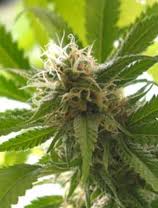Jim Finnel
Fallen Cannabis Warrior & Ex News Moderator
Children should not automatically be removed from homes where grow-ups have been discovered just because of an assumption that their health is at risk, according to new research from Sick Kids.
A study looked at 75 children who were removed from "drug-producing homes" in York Region between 2006 and 2010 and found that the majority were healthy and drug-free.
The study, published in the July 25 advance online edition of the Journal of Pediatrics, found that children may not be exposed to the alarming health risk widely believed to exist, says study author Dr. Gideon Koren, a senior scientist at the Hospital for Sick Children and director of its Motherisk program.
"Safety issues may require the child to be removed from the physical location of drug production and the child may also need to be seized from the parents for legal reasons. However, there is no medical justification to automatically separate them from their parents," he says.
Children found in homes with marijuana-growing operations or makeshift methamphetamine laboratories in the Greater Toronto Area are routinely identified by police and referred to the local children's aid society, which usually remove the children from the homes and separate them from their parents. These children are sometimes placed in foster care.
In 2006, the York Region Children's Aid Society and York Regional Police asked Motherisk to study such children and assess their health.
The children, who ranged in age from two months to 15 years, came from 46 different homes. Eighty per cent of the homes were marijuana-growing operations or homes where large quantities of the drug were found. The remaining homes were engaged in cocaine or amphetamine production or had multiple different kinds of drugs being produced and stored.
While hair follicle testing identified exposure to illicit drugs in a third of the children, the majority showed no symptoms of this exposure. In fact, the health problems found in this population were actually fewer than those in the general Canadian population.
Previous research shows risks associated with a methamphetamine lab differ significantly from those associated with marijuana-growing operations where children are exposed primarily to plants. While meth labs may allow exposure to dangerous chemicals and possible explosions, grow-ops pose risks similar to those affecting children on farms.
"Making any generalization – either removing all these kids or none of these kids – should not be automatic. The decisions should be made following detailed assessment on a case-by-case basis," Koren says.

NewsHawk: Jim Behr: 420 MAGAZINE
Source: healthzone.ca
Author: Theresa Boyle
Copyright: Toronto Star
Contact: Healthzone.ca
Website: Should children be removed from grow-op homes?
A study looked at 75 children who were removed from "drug-producing homes" in York Region between 2006 and 2010 and found that the majority were healthy and drug-free.
The study, published in the July 25 advance online edition of the Journal of Pediatrics, found that children may not be exposed to the alarming health risk widely believed to exist, says study author Dr. Gideon Koren, a senior scientist at the Hospital for Sick Children and director of its Motherisk program.
"Safety issues may require the child to be removed from the physical location of drug production and the child may also need to be seized from the parents for legal reasons. However, there is no medical justification to automatically separate them from their parents," he says.
Children found in homes with marijuana-growing operations or makeshift methamphetamine laboratories in the Greater Toronto Area are routinely identified by police and referred to the local children's aid society, which usually remove the children from the homes and separate them from their parents. These children are sometimes placed in foster care.
In 2006, the York Region Children's Aid Society and York Regional Police asked Motherisk to study such children and assess their health.
The children, who ranged in age from two months to 15 years, came from 46 different homes. Eighty per cent of the homes were marijuana-growing operations or homes where large quantities of the drug were found. The remaining homes were engaged in cocaine or amphetamine production or had multiple different kinds of drugs being produced and stored.
While hair follicle testing identified exposure to illicit drugs in a third of the children, the majority showed no symptoms of this exposure. In fact, the health problems found in this population were actually fewer than those in the general Canadian population.
Previous research shows risks associated with a methamphetamine lab differ significantly from those associated with marijuana-growing operations where children are exposed primarily to plants. While meth labs may allow exposure to dangerous chemicals and possible explosions, grow-ops pose risks similar to those affecting children on farms.
"Making any generalization – either removing all these kids or none of these kids – should not be automatic. The decisions should be made following detailed assessment on a case-by-case basis," Koren says.

NewsHawk: Jim Behr: 420 MAGAZINE
Source: healthzone.ca
Author: Theresa Boyle
Copyright: Toronto Star
Contact: Healthzone.ca
Website: Should children be removed from grow-op homes?


